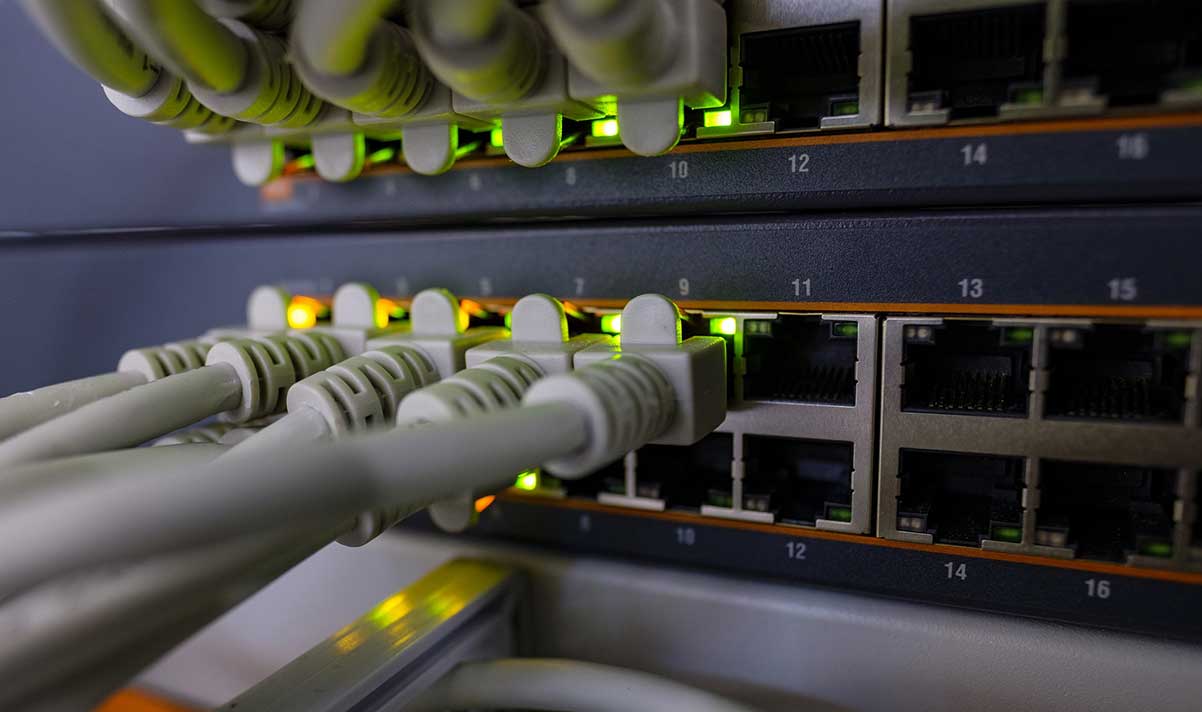
Need a PoE Switch
The demand for networking devices such as IP phones and cameras, wireless access points (WAPs), audio devices, network routers, etc., grows daily. When the time comes to choose a PoE (Power over Ethernet) network switch for these powered devices (PDs), you will find many options. For example, do you need a PoE switch or a PoE+ switch? A managed or an unmanaged switch? The purpose of this article is to give selection guidance to those who wish to purchase this vital piece of equipment.
Before you purchase a PoE switch, it is necessary to know the available different types.
Active vs. Passive PoE Switch
An active PoE switch (also called a standard PoE switch) negotiates the proper voltage between the power supply equipment (PSE) and the PD. Before an active PoE switch powers up, it tests/checks that the switch and the PD’s electrical power are compatible. If the PoE switch and the PD are not compatible, the switch will not deliver power, therefore, preventing any potential damage to the PD. An active PoE switch is rated as one of the following: IEEE 802.3af (PoE), IEEE802.3af (PoE+), or IEEE 802.3bt (PoE++).
With passive PoE switches (also called non-standard), Power over Ethernet is delivered without the negotiation process and does not adhere to any IEEE standards. This type of switch is always “on” and sends electrical current over an Ethernet cable at a prescribed voltage whether or not the terminal device supports PoE. As a result, a passive PoE switch could burn out any terminal device that is not configured for electrified Ethernet cabling.
Because active PoE switches come with a built-in power controller, and passive PoE switches do not, it is evident that active PoE switches will come at a higher price range.
Unmanaged vs. Managed PoE Switch
An unmanaged PoE switch is the most basic form of a network switch. This type of switch employs a fixed configuration design that does not allow any changes. In general, it is a plug-and-play device that is used in a small home or office network. An unmanaged PoE switch is not recommended for any businesses that handle sensitive information.
Conversely, a managed PoE switch allows the management, configuration, and monitoring of the local area network (LAN), which includes features that control network traffic, such as simple network management protocol (SNMP) and virtual local area network (VLAN). Managed PoE switches also have features that duplicate and recover data in the event of a device or network failure. Managed PoE switches are designed and recommended for heavy workloads, a high volume of traffic, and for networks that require custom configuration.
Layer 2 vs. Layer 3 PoE Switch
The chief difference between a Layer 2 and a Layer 3 PoE switch has to do with the routing function. Layer 2 PoE switches work only with media access control (MAC) addresses. They do not deal with internet protocol (IP) addresses or any items of higher layers. A Layer 2 PoE switch is designed for small networks.
A Layer 3 PoE switch does all the same things as a Layer 2 switch does; however, it also includes both static and dynamic routing, which means it has a MAC address table and an IP routing table. It can transfer data between different LANs and VLANs and handle intra-VLAN communication because it routes data packets through IP addresses and subnetting. Other features include:
- Support of routing protocols
- Inspection of incoming data packets
- Making routing decisions based on source and destination addresses
When purchasing a Layer 2 or Layer 3 PoE switch, it is advisable to check out other key factors, such as the forwarding rate, backplane bandwidth, number of VLANs, the memory of MAC addresses, latency, etc. Most corporate networks employ a mixture of Layer 2 and Layer 3 PoE switches.
Other Important Factors to Consider When Choosing a PoE Switch
Selecting a PoE switch type is not the end of the road. There are several other factors to consider before making the final decision when need a PoE Switch .
Number of Ports
One of the most important things to consider when buying a PoE switch is the number of ports. You will need a switch that has enough wired RJ45 connections for each internet connection required. Also, it is not a bad idea to select a switch with a few more ports than needed, as this allows for the expansion of your network in the future.
Commonly, PoE network switches come equipped with 8, 12, 16, 24, or 48 ports; however, it is possible to obtain a switch with even more ports. An 8-port PoE switch is appropriate for home use, while a 48-port switch is designed for businesses and data centers.
Ethernet Switch Speed
Most PoE switches support 10/100/1000Base-T—some even support rates as fast as 1/10G. Most switches use Ethernet cables to connect PDs, which means the switches are backward compatible with older 10/100Mbps legacy devices—no need to update.
Power Consumption
It is essential to estimate the power consumption of all your PDs before searching for a PoE switch. The aggregate power consumption of all PDs must not exceed the maximum power supply of the PoE switch. For example: If you purchase an 8-port PoE switch that complies with IEEE 802.3af/at standards, the switch will have a maximum power consumption of 150W. Because the switch itself consumes power, you will be left with a PoE power budget of 130W. Therefore, the switch in question can simultaneously connect eight 15.4W devices that use the IEEE 802.3af standard (15.4W x 8=123.2W>130 W)—or four 30W devices that use the IEEE 802.3af standard (30W x 4=120W>130W).1
PoE Compatibility
Because all PSEs do not necessarily work with all PDs, make sure the PoE switch you choose is compatible with your PDs. You can do this by:
- Making sure the PoE switch supports the PoE standard that the PDs require. In other words, if your PDs use the PoE++ standard, then your PoE switch must be PoE++ too.
- Confirming the power supply modes of the PoE switch and PDs are the same. If a PD is designed for PoE mode B, but the PoE switch is designed for mode A, they will not work together.
- Making sure your PDs are not locked into working only with PSEs produced by a specific manufacturer.
A Word About Cabling
Manufacturers recommend that Ethernet cables that use oxygen-free wire be utilized to offer less power and signal loss. The maximum transmission length between a PoE switch and a PD is 100 meters. The further the distance between a switch and PD, the weaker the signal becomes. Should you need a longer transmission distance, a PoE extender will help.
Technical Support
When you purchase a PoE switch, it may be beneficial to make sure the device comes with technical support. If something goes wrong, an in-place technical support provision will go a long way to saving you hassles, time, and money.
Last Words
Need a PoE Switch ? It takes effort to prepare for the purchase of a PoE switch. Take time to know the specifications and needs of your PDs before deciding which type of PoE switch will work for you. Asking the right questions and getting the correct answers will help you buy the most appropriate PoE network switch for your particular needs.

Founder Dinis Guarda
IntelligentHQ Your New Business Network.
IntelligentHQ is a Business network and an expert source for finance, capital markets and intelligence for thousands of global business professionals, startups, and companies.
We exist at the point of intersection between technology, social media, finance and innovation.
IntelligentHQ leverages innovation and scale of social digital technology, analytics, news, and distribution to create an unparalleled, full digital medium and social business networks spectrum.
IntelligentHQ is working hard, to become a trusted, and indispensable source of business news and analytics, within financial services and its associated supply chains and ecosystems






























